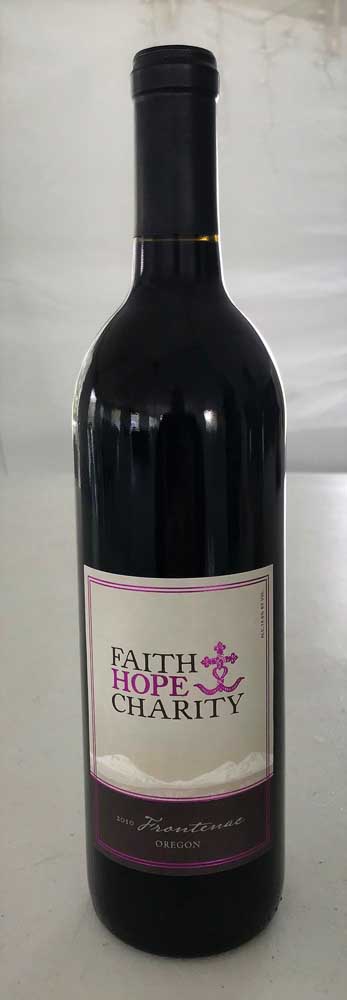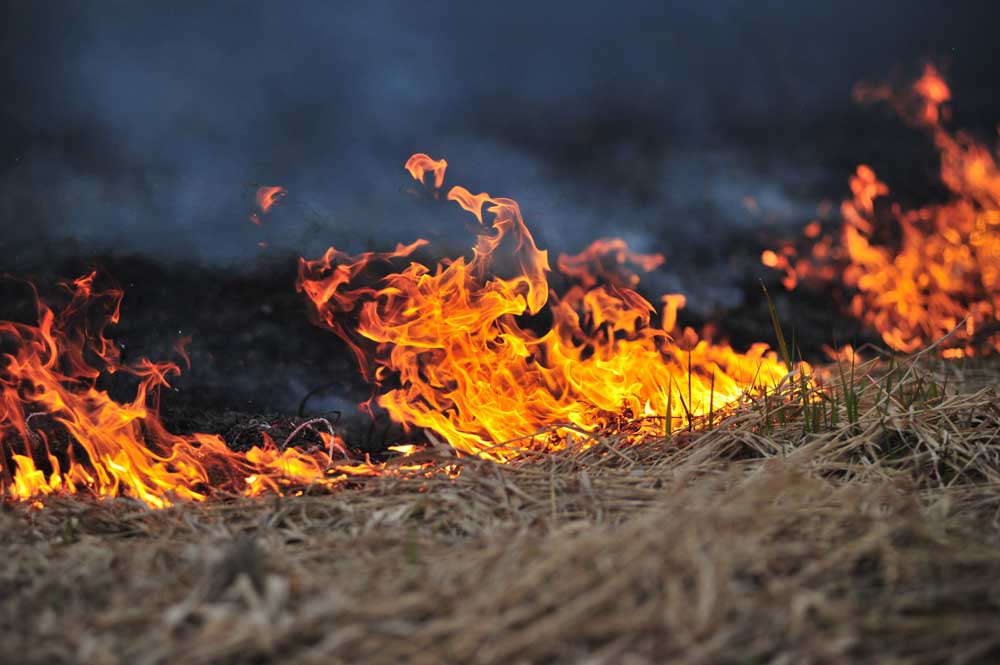Faith, Hope and Charity, others, growing cold-hardy grapes
Published 3:53 pm Thursday, February 1, 2018

- The 2013 Faith, Hope & Charity frontenac ($30) won a bronze medal at the Northwest Food & Wine Festival in Portland. (Submitted)
The idea of a successful grape harvest in Central Oregon was met with doubts, disbelief and sometimes even derision in the not-too-distant past.
The climate and the short growing season, with frost possible as late as June and as early as September, precluded success with traditional European vinifera grapes, naysayers argued. And while a few growers succeeded at lesser levels, notably Doug Maragas of Culver’s Maragas Winery, it became widely accepted that grapes like Oregon’s beloved pinot noir would never thrive in the High Desert.
In the upper Midwest and in New York state, however, a new variety of grape was being hailed as a solution to the climate problem. Hybrid varietals were developed by agricultural schools at the University of Minnesota and Cornell University, as well as by independent researchers. By crossing vinifera with labrusca or riparia grapes, both native to northeastern North America, scientists succeeded in creating a grape with a tolerance to temperatures as cold as negative 30 degrees.
“Not only that,” said Cindy Grossmann, who with her husband, Roger, owns Faith, Hope and Charity Vineyards, 12 miles west of Terrebonne. “They are resistant to disease, to insects, and to mold and mildew.”
Bumper crop
Grossmann has good reason to be ecstatic about hybrid grapes. Her 15-acre vineyard and winery, first planted in 2010, produced a bumper crop of 15 tons of grapes in its just-concluded 2017 harvest.
“I’m so excited!” Grossmann said. “People didn’t believe we could do it!”
The yield includes four red hybrids (Marquette, Marechal Foch, Frontenac and Léon Millot) and four whites (La Crescent, La Crosse, Vignoles and Frontenac Gris).
Marechal Foch is by far the oldest varietal among them. It’s been grown in Canada since 1946. A very dark but light-bodied red, it draws comparisons to French Beaujolais.
Léon Millot, introduced to the wine world only in 2009, has similar characteristics. Frontenac (1996) is drier and more fruit-forward. Marquette (2006), which Grossmann calls “a beautiful grape,” has been compared with both frontenac and pinot noir.
Hybrid reds share a distinction of not being particularly tannic, however — unlike such popular vinifera reds as merlot and cabernet sauvignon. Likewise, hybrid whites (most of them introduced in the early 1970s) tend to be acidic and off-dry. La Crosse has been likened to riesling, for instance. Frontenac gris, which hit the market only in 2003, is said to have more character of stonefruit, like peaches and apricots.
Grapes are grown under the direction of Faith, Hope and Charity vineyard and winery manager Steve Boyd, who commutes from his Minnesota home five times a year, staying longest for April bud break and late September harvest.
The wines are produced at Medford’s Pallet Wine Company by winemaker Linda Donovan, Grossmann said. Reds are bottled in February, whites in August.
The hybrid wines have been well received, winning awards from Sunset Magazine and at the Northwest Food & Wine Festival competitions. Currently, however, FHC is sold out of its hybrids, and is only offering vinifera wines (merlot, pinot noir, barbera and chardonnay) until the 2018 bottling is released.
The vinifera wines are sourced elsewhere in Oregon and produced by Donovan.
“Our growing season is not long enough to set the sugar free,” Grossmann said. “With its hot summer days, cool nights and sandy soils, Central Oregon is a very good region for cold-hardy grapes, but not for vinifera.”
Hobby vines
For other growers in this region, growing grapes is mainly a hobby, albeit one with the potential to turn a profit.
Duane and Dina Barker planted their Ripplin’ Waters Vineyard just north of Bend in 2012 after a year of research. They began with a test vineyard of 50 vines, including 20 pinot noir and 30 Marechal Foch. There was no question the hybrid vines did far better than the vinifera.
Today, they have 2 acres planted with 1,250 vines, more than half of it Marquette. In their third harvest this year, they took in 2.4 tons, and Duane Barker promises: “We will double that next year off the same acreage with more mature vines.” In addition to Marquette and Marechal Foch, those include La Crescent and Briana, another white grape.
Barker said his goal is to go into commercial production in 2018, placing his wine in local restaurants, wine shops and grocery stores.
As with Faith, Hope and Charity, he contracts Donovan of Medford’s Pallet as his winemaker. “I expect it to sit on oak until September,” he said.
In Prineville, in June, ranchers Bryan and Vikki Iverson planted 1,000 vines — 700 Marquette and 300 Marechal Foch — on two hillside acres at 2,400 feet elevation, 300 feet lower than the Grossmanns and 1,000 lower than the Barkers.
“We were exploring things that we might want to do with the range property,” Bryan Iverson said. “We have a south-facing slope that we thought would be a pretty good site.” The soil was sand and rock, high in organic material, and the land was irrigated and well drained. Initially, Iverson said, he needed only to install an 8-foot-high deer fence.
Long term, Iverson said, he can envision at least 10,000 vines on 20-plus acres. But he doesn’t intend to build a winery: “I just see us being a wholesaler to the Grossmanns and other folks,” he said. “If it’s done well, we could produce a profit on property that currently is not turning one.”
The Barkers and the Iversons got advice from Kerry Damon, president of the Central Oregon Wine and Grape Growers Association, who has been here since he was hired in 2005 to develop a vineyard at the Ranch at the Canyons. His 4-acre Monkey Face Vineyard became the largest commercial hybrid vineyard west of the Mississippi River until it was eclipsed by Faith, Hope and Charity.
— John Gottberg Anderson can be reached at janderson@bendbulletin.com.








